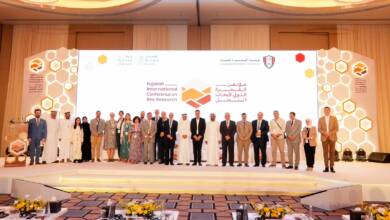Construction of the port started on 1978 as part of the economic development of Fujairah and container operations commenced in 1982. The port assumed full operation on 1983. Two oil terminals were also constructed on the port. The first oil terminal commenced operation in January 2006 while the second oil terminal commenced operation in June 2010.
Port facilities
The port has two bulk loaders for exports, the first loader is capable of loading 2,000 tons per hour while the second loader is capable of loading 4,000 tons per hour.
The port consists of two breakwater berths; a southern and a northern breakwater berth. The southern breakwater berth has 840 meters (2,760 ft) of general cargo berth and a draft of 15 m (49 ft). The southern breakwater berth is the common site for repairing vessels and has a travel lift facility for vessel maintenance and repair. The northern breakwater berth hosts two oil terminals.
The port is expanding its operational capacity to enable the handling of larger vessels and provide more services. The port is expected to install advanced cargo lifting equipment by 2021.The port is connected to the Etihad Rail linking the industrial city of Ruwais in the western region of the UAE to the town of Ghuwaifat close to the Saudi border and then to Fujairah in the east. The rail in Fujairah is used to carry bulk containers and oil.
UAE-based Brooge Petroleum and Gas Investment Company announced plans to set up an oil refinery to produce bunker fuel with a capacity of 250,000 barrel per day (bpd) in the port. The facility will be the first in the Middle East and North Africa to comply with the new IMO 2020 regulations of the International Maritime Organization by capping sulfur content in shipping fuels. The first phase of the project is expected to be finished in the first quarter of 2020.
Strategic location
The Port of Fujairah has a strategic location being connected to all the emirates within 300 km (190 mi) and located on the only eastern seaboard of the United Arab Emirates.
-Wikipedia




